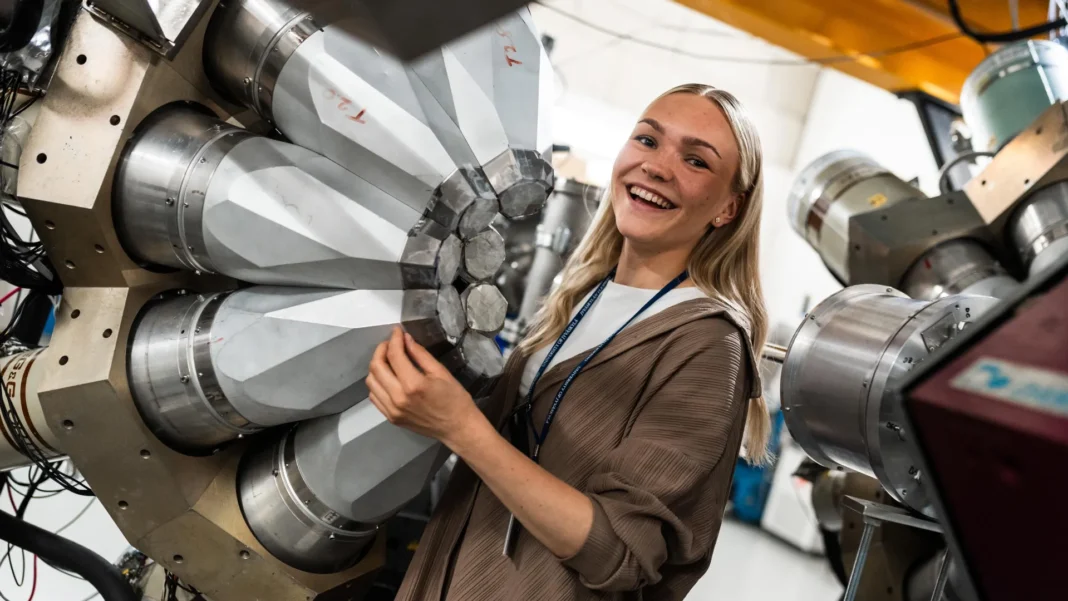For the first time in more than thirty years, the heaviest nucleus decaying via proton emission has been measured. The previous similar breakthrough was achieved in 1996.
The radioactive decay of atomic nuclei has been one of the keystones of nuclear physics since the beginning of nuclear research. Now the heaviest nucleus decaying via proton emission has been measured in the Accelerator Laboratory of the University of Jyväskylä, Finland.
“Proton emission is a rare form of radioactive decay, in which the nucleus emits a proton to take a step towards stability,” says Doctoral Researcher Henna Kokkonen from the University of Jyväskylä.
Studying exotic nuclei is difficult, but not impossible
The new nucleus is so far the lightest known isotope of astatine, 188At, consisting of 85 protons and 103 neutrons. Exotic nuclei of this kind are extremely challenging to study due to their short lifetimes and low production cross sections, so precise techniques are needed.
“The nucleus was produced in a fusion-evaporation reaction by irradiating natural silver target with 84Sr ion beam,” says Academy Research Fellow Kalle Auranen from the University of Jyväskylä. “The new isotope was identified using the detector setup of the RITU recoil separator.”
Study reveals new findings on heavy nuclei
In addition to the experimental results, the study expanded a theoretical model to interpret the measured data. Through the model, the nucleus can be interpreted as strongly prolate, i.e. “watermelon shaped.”
“The properties of the nucleus suggests a trend change in the binding energy of the valence proton,” says Kokkonen. “This is possibly explained by an interaction unprecedented in heavy nuclei.”
The study is a follow-up to the master’s thesis
The study is part of Kokkonen’s doctoral thesis and a direct scientific follow-up to her master’s thesis, in which she discovered a new type of atomic nucleus, the 190-astatatine. The thesis article was published in the Physical Review C journal in 2023.
“Isotope discoveries are rare worldwide, and this is the second time I have had the opportunity to be part of making history,” Kokkonen rejoices. “Every experiment is challenging, and it feels great to do research that improves understanding of the limits of matter and the structure of atomic nuclei.”
The research article was written as part of an international research collaboration involving experts in theoretical nuclear physics. The study was published in the renowned Nature Communications.





